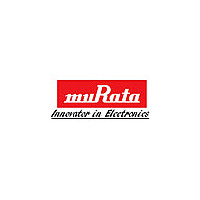CSTCR4M00G55-R0 Murata Electronics, CSTCR4M00G55-R0 Datasheet - Page 2

CSTCR4M00G55-R0
Manufacturer Part Number
CSTCR4M00G55-R0
Description
SMD,4.5X2,CMOS,0.2%,-20+80,4.0000MHZ,T/R,
Manufacturer
Murata Electronics
Datasheet
1.CSTCR4M00G55-R0.pdf
(8 pages)
Available stocks
Company
Part Number
Manufacturer
Quantity
Price
Company:
Part Number:
CSTCR4M00G55-R0
Manufacturer:
MURATA
Quantity:
240 000
Part Number:
CSTCR4M00G55-R0
Manufacturer:
MURATA/村田
Quantity:
20 000
■ Murata's recommendation 推奨回路定数
■
Characteristics of Oscillation Circuit 発振回路特性
*(1)(2)(3)はピン番号を表します。
詳しくは弊社仕様書またはカタログをご参照ください。
*(1),(2) and (3) means erminal number of resonator.
Please see its specification or datasheet in detail.
Vcel is driving voltage of oscillation circuit
Vcelは発振回路の電圧を表します
*1 R1: Resonant impedance. "R1 limit sample" means R1 resistance of applied sample is equal as its R1 spec.
*2 The measurement results is affected by the rise-up characteristics of suplpied voltage on your PCB. Please refer to appendix 1.
*3 Frequency correlation means the oscillating frequency difference between your PCB and Murata frequency sorting circuit with standard IC.
1. Oscillating Waveform
発振波形
2. Oscillating Voltage
発振電圧
3. Starting Voltage
発振開始電圧
4. Rise Time and Transient Waveform
発振立ち上がり波形
IC name
Parts Number
C
Rf [ohm]
Rd [ohm]
Supply Voltage Range[V]
Temp. Range [deg.C]
Characteristics
特性
Oscillating Voltage
発振電圧
(Vcc=5V, 25deg.C)
(Vcel=1.5V)
Starting Voltage
発振開始電圧
(-40 to +85deg.C)
Oscillation Start up Time
発振立ち上がり時間 (*2)
(Typical sample at Vcc=5V,25deg.C)
Frequency Correlation
発振周波数相関 (*3)
(Typical sample at Vcc=5V,25deg.C)
< Characteristics to Check 判定項目 >
Characteristics 特性
1
測定結果は実装基板の電源立ち上がり特性の影響を受けます。添付資料1をご参照下さい。
貴社基板と当社標準回路では、同一発振子を使用した場合でも発振周波数の差が生じます。これを発振周波数相関と呼びます。添付資料2をご参照下さい。
Evaluation Data of CERALOCK
, C
R1は発振子の共振抵抗を意味します。R1規格限界品とは、適用する発振子の共振抵抗値が、その規格値まで低下した状態のサンプルとなります。
Please refer to appendix 2.
2
[pF]
* As close as possible to a sine wave
* No distortion around Vth level of IC
ICのスレッシュレベル付近で歪みなきこと
* Oscillating Voltage is not too large
発振振幅が大き過ぎないこと
* Oscillating Voltage is enough with limit sample
R1規格限界品での発振振幅が十分であること
* Meet customer requirements
電源電圧範囲の要求値を満たすこと
* No irregular oscillation waveform overlapping
異常発振無きこと
Typical sample
R1規格限界品(*1)
Typical sample
R1 limit sample
R1規格限界品(*1)
Requirements 条件
R1 limit sample
正弦波に近いこと
標準品
標準品
IC名
品番
負荷容量
帰還抵抗
制限抵抗
電源電圧範囲
温度範囲
V
IN
Vcc
H
Xin
10kΩ
Murata Manufacturing Co., Ltd.
(1)
Value
測定値
VOp-p
VIp-p
VOH
VOL
VIH
VIL
R5F21336TDFP(CM11=0)
C
CERALOCK
1
2
®
(2)
Rf
3
Oscillation Circuit
-0.1
0.03 [ms]
®
1.6
1.6 [V]
0.0
1.2
1.6
1.7
1.7
0.1
C
2
Xout
(3)
15
R5F21336TDFP(CM11=0)
CSTCR4M00G55-R0
39 pF
No mount
680ohm
1.8 to 5.5 V
-40 to +85deg.C
Rd
[V]
[V]
[V]
[V]
[V]
[V]
[V]
[%]
V
OUT
Criterion
基準
≥ 0.4 x Vcel
( ≥ 0.6V)
≥ -0.3V
≥ -0.3V
L
≤ 1.8V
≤ 1.8V
≤ 1.8V
- Supply voltage 電源電圧 ≤ 3.3V
Criterion 基準
No distortion from 0.3xVcel to 0.7xVcel
Maximum Starting Voltage +0.1
-0.3V ≤ VIL, VIH ≤ Vcel+0.3V, VI p-p ≥ 0.4xVcel
CERALOCK
≤ Minimum Voltage Range (your request)
Notes
Input high voltage
発振入力電圧High側レベル
Input low voltage
発振入力電圧Low側レベル
Output high voltage
発振出力電圧High側レベル
Output low voltage
発振出力電圧Low側レベル
Swing level at input side
発振入力振幅 (VIH - VIL)
Swing level at output side
発振出力振幅 (VOH - VOL)
Lowest supply voltage for oscillation start
発振回路が動作を始める最低電源電圧
Time to reach 90% of the oscillation
level under steady state
定常状態の発振振幅の90%に達するまでの時間
Oscillating frequency correlation
against our standard IC
当社標準回路に対する発振周波数ずれ量
3(RESET)
備考
15(P4_5)
24(P1_0)
23(P1_1)
22(P1_2)
Pin
OUT: 4
Vcc =1.8 to 5.5 V
IN : 6
Rd =680ohm
Ta =-40 to +85deg.C
C
C
Rf =No mount
®
1
2
:CSTCR4M00G55-R0
=39 pF (Typ.)
=39 pF (Typ.)
L→H
L→H
SW
H
L
L
TCD-10-0413
2



















